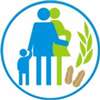
Malnutrition and nutrition related diseases continue to be problems of great public health importance in Nigeria and indeed in Kaduna State.
Nutrition intervention needs a multi-sectorial approach in Kaduna State to achieve meaningful impact. It has to be recognized that the attainment of the Sustainable Development Goals (SDGs) and meaningful economic development will not happen without an urgent improvement in nutrition.
The Kaduna State Emergency Nutrition Action Plan, KADENAP was inaugurated in January 2017 by Governor Nasiru El-Rufai following the disturbing statistics of 263,495 cases of children with Severe Acute Malnutrition (SAM) and 248,394 cases of children with Moderate Acute Malnutrition (MAM) according to Federal Ministry of Health and UNICEF, 2017.
KADENAP was immediately created to fast track the activities of existing Ministries, Departments and Agencies that have to do with Nutrition, women, child health and development, to properly synergize their functions, avoid duplication of efforts, and eliminate clogging and unnecessary delay in addressing Malnutrition issues through holistic and sustainable ways.
KADENAP was inaugurated by Governor Nasir Ahmad El-Rufai in January 2017 to support and authorize Her Excellency Aisha Ummi Garba El-Rufai’s initiation of the Kaduna State Emergency Nutrition Action Plan (KADENAP) as an urgent task force in tackling malnutrition.
Her conception of KADENAP sprang immediately upon discovering the disturbing statistics of malnourished children in Kaduna State. Aisha Ummi Garba El-Rufai as the Chairperson provides a very committed leadership to KADENAP, with Commissioners of key ministries as members of the steering committee (Budget& Planning, Health, Education, Water Resources, Agriculture & Forestry, Women Affairs & Social development), Finance with the Chairmen of Local Government Areas in the state.
Other members are stakeholders in the health and nutrition sector, and various partners.
KADENAP operates in three phases ;
PHASE 1: to urgently treat severely malnourished children especially those who are dying under the age of 5, with the administration of Ready to Use Therapeutic Food (RUTF).
PHASE 2: to handle malnourished children above the age of 5, plus the mothers who always suffer from malnutrition.
PHASE 3: to bring about an attitudinal change in the daily living practices of our people so that malnutrition is tackled in holistic and sustainable ways.
